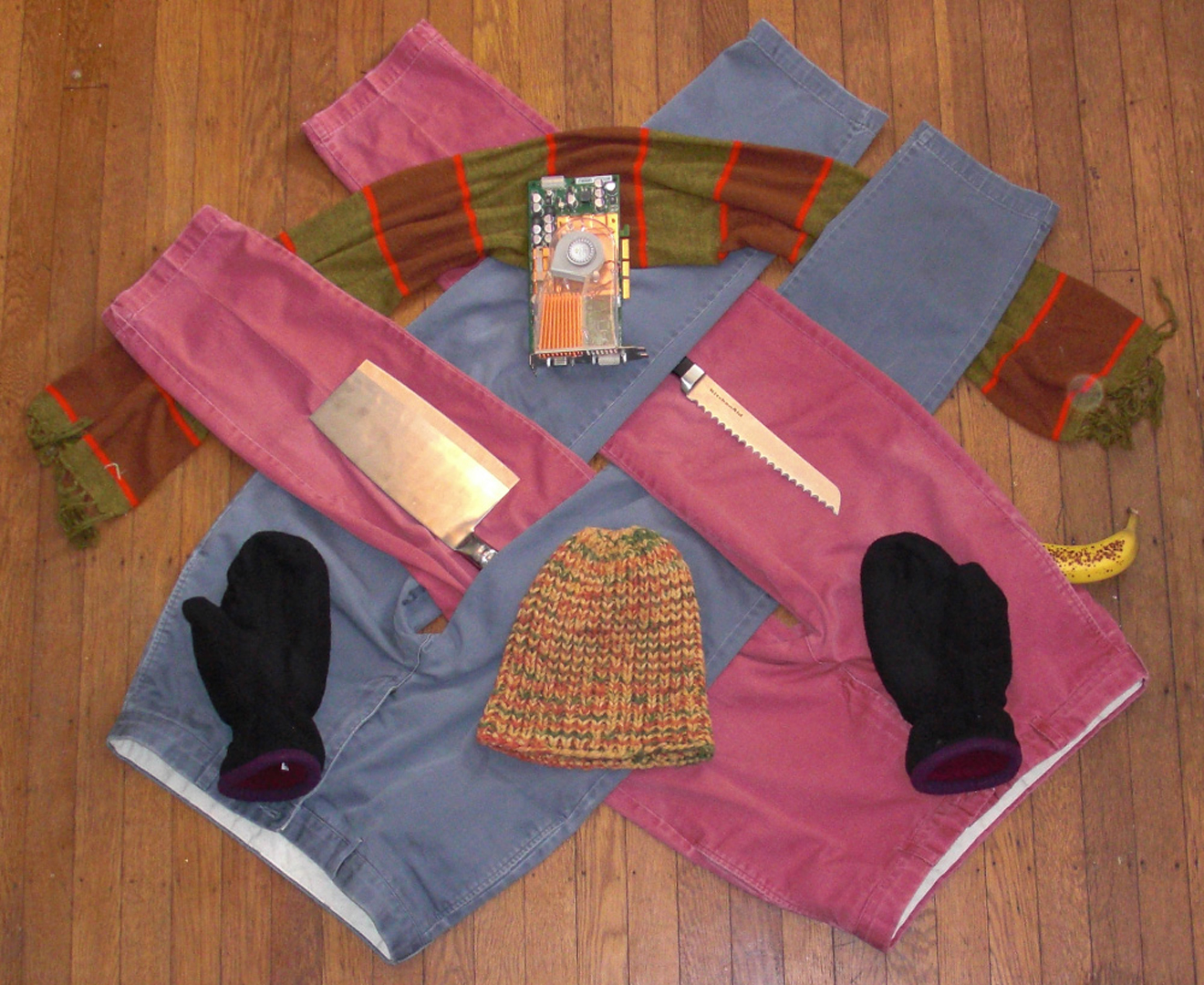“Local layering” by McCrae and Pollard
Conference:
Type(s):
Title:
- Local layering
Presenter(s)/Author(s):
Abstract:
In a conventional 2d painting or compositing program, graphical objects are stacked in a user-specified global order, as if each were printed on an image-sized sheet of transparent film. In this paper we show how to relax this restriction so that users can make stacking decisions on a per-overlap basis, as if the layers were pictures cut from a magazine. This allows for complex and visually exciting overlapping patterns, without painstaking layer-splitting, depth-value painting, region coloring, or mask-drawing. Instead, users are presented with a layers dialog which acts locally. Behind the scenes, we divide the image into overlap regions and track the ordering of layers in each region. We formalize this structure as a graph of stacking lists, define the set of orderings where layers do not interpenetrate as consistent, and prove that our local stacking operators are both correct and sufficient to reach any consistent stacking. We also provide a method for updating the local stacking when objects change shape or position due to user editing – this scheme prevents layer updates from producing undesired intersections. Our method extends trivially to both animation compositing and local visibility adjustment in depth-peeled 3d scenes; the latter of which allows for the creation of impossible figures which can be viewed and manipulated in real-time.
References:
1. Adelson, E. H., and Wang, J. Y. A. 1994. Representing moving images with layers. IEEE Transactions on Image Processing 3, 625–638.Google ScholarDigital Library
2. Apple, 1999–2009. Final Cut Pro. http://www.apple.com/finalcutstudio/finalcutpro/.Google Scholar
3. Asente, P., Schuster, M., and Pettit, T. 2007. Dynamic Planar map illustration. ACM Transactions on Graphics 26, 3, 30. Google ScholarDigital Library
4. Baudelaire, P., and Gangnet, M. 1989. Planar maps: an interaction paradigm for graphic design. SIGCHI Bull. 20, SI, 313–318. Google ScholarDigital Library
5. Cordier, F., and Seo, H. 2007. Free-form sketching of self-occluding objects. IEEE Comput. Graph. Appl. 27, 1, 50–59. Google ScholarDigital Library
6. Debevec, P. E., Taylor, C. J., and Malik, J. 1996. Modeling and rendering architecture from photographs: a hybrid geometry- and image-based approach. In Proceedings of SIGGRAPH 96, ACM, New York, NY, USA, 11–20. Google ScholarDigital Library
7. Duff, T. 1985. Compositing 3-d rendered images. Computer Graphics (Proceedings of SIGGRAPH 85) 19, 3, 41–44. Google ScholarDigital Library
8. Everitt, C. 2001. Introduction to interactive order-independent transparency. Tech. rep., NVIDIA.Google Scholar
9. Igarashi, T., Moscovich, T., and Hughes, J. F. 2005. As-rigid-as-possible shape manipulation. ACM Transactions on Graphics 24, 3, 1134–1141. Google ScholarDigital Library
10. Karpenko, O. A., and Hughes, J. F. 2006. Smoothsketch: 3d free-form shapes from complex sketches. ACM Transactions on Graphics 25, 3 (July), 589–598. Google ScholarDigital Library
11. Kimball, S., and Mattis, P., 1995–2009. The GNU Image Manipulation Program. http://www.gimp.org.Google Scholar
12. Mediachance, 2001–2009. Real-Draw PRO push-back tool. http://www.mediachance.com/realdraw/help/pushback.htm.Google Scholar
13. Nitzberg, M., and Mumford, D. 1990. The 2.1-d sketch. Computer Vision, 1990. Proceedings, Third International Conference on (Dec), 138–144.Google Scholar
14. Porter, T., and Duff, T. 1984. Compositing digital images. Computer Graphics (Proceedings of SIGGRAPH 84) 18, 3, 253–259. Google ScholarDigital Library
15. Smith, A. R. 1995. Alpha and the history of digital compositing. In Microsoft Technical Memo #7.Google Scholar
16. Snyder, J., and Lengyel, J. 1998. Visibility sorting and compositing without splitting for image layer decompositions. In Proceedings of SIGGRAPH 98, ACM, New York, NY, USA, 219–230. Google ScholarDigital Library
17. SVG Working Group, 2003. Scalable Vector Graphics (SVG) 1.1 Specification. http://www.w3.org/TR/SVG11/.Google Scholar
18. Wiley, K. 2006. Druid: Representation of Interwoven Surfaces in 2 1/2 D Drawing. PhD thesis, University of New Mexico. Google ScholarDigital Library
19. Williams, L. R. 1997. Topological reconstruction of a smooth manifold-solid from its occludingcontour. Int. J. Comput. Vision 23, 1, 93–108. Google ScholarDigital Library




